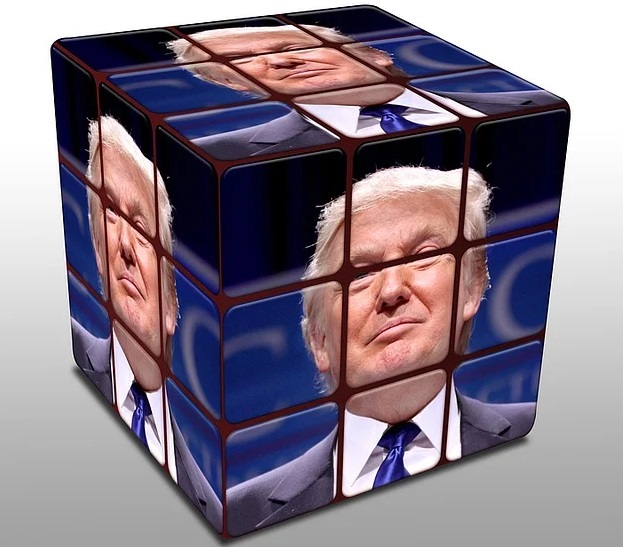The investment industry is reacting following yesterday's (2 April) Trump "liberation day" imposing tariffs across the globe.
Michael Field, chief equity strategist at Morningstar said: "That Asian countries got hit much harder than Europe will be of no consolation to businesses here. A 20% tariff on all European goods is potentially devastating for many industries, if indeed these tariffs are permanent and fixed in nature.
"This is unlikely, given that administration officials have intimated that negotiation will be possible. Short-term disruption is inevitable however, given that the tariffs come into place on April 5th, leaving governments no time to stop the process.
"Consumer goods, healthcare and industrials sectors will be amongst the sectors worst affected by the new measures. The extent to which we have not yet reflected in our cash flow forecasts, nor our fair value estimates.
"Worse possibly, will the response by the EU, and the likely counter-response by the US government. All of which will ratchet up the damage to exporting and importing businesses. The coming weeks will be telling, whether this event has the potential to reshape global trade, or whether, as many have predicted, there is a deal to be done."
Jelena Sokolova, senior equity analyst and luxury goods expert at Morningstar said: "Of the global tariffs, 20% on the EU, 10% for the UK 10% and 31% for Switzerland are the most impactful for the luxury sector. American demand is around 30% for the sector.
"The 36% tariff on Thailand affects Pandora, with most manufacturing in this region and more affordable price positioning. Shares are down 12%, and probably will have to take some of the tariffs into their bottom line, but gross margins at around 80% have a mitigating factor.
"There has been no talk from most of the luxury companies we cover about relocation of manufacturing to the U.S.. European manufacturing is part of the brand. Tariffs are likely to be passed on to consumer, but if demand is poor this could impact volume.
"The biggest risk for luxury sector are not the tariffs applied to goods, as luxury has pricing power and luxury consumers are global travellers, but the impact of those on economic growth and consumer sentiment. Poor performance of the U.S. stock market this year is a negative read-across to luxury demand and some companies have started seeing slowdown in this market after very strong Q4."
Following yesterday's "Liberation Day" speech from Donald Trump, where he announced India has been hit with a tariff rate of 26%,
Andy Draycott, portfolio manager at Chikara Investments reacted to India getting hit with a tariff rate of 26%: "Trump’s tariffs offer an opportunity to accelerate the rate at which India picks up some of China’s manufacturing share. We expect an increase from India’s current 1% market share as companies shift at least some of their manufacturing capacity to sidestep Sino-US uncertainty.
"Additionally, Trump’s reciprocal tariffs on India could catalyse improved economic relations through further Indian concessions as officials have been debating lower duties for a variety of goods to offset the impact of tariffs."
Richard Carter, head of fixed interest research at Quilter said: “As markets digest Donald Trump’s harsh tariffs, it is clear these rates were much more punitive than the market was expecting. Trump spoke sternly on the need to right the wrongs of the past and make America wealthy again, but in the short-term what this has done is stoked an already tense global trade situation and increased the chances of a major slowdown in growth both in the US and globally. The chances of a recession in the world’s largest economy have now increased to the point where the market thinks it is likely. How Trump spins this, and the fact these tariffs will add to the inflationary fire, is anyone’s guess.
“Markets, unsurprisingly have reacted badly. Treasury yields have fallen sharply, as investors take flight and look for safe haven assets. This would suggest the Federal Reserve will need to put additional rate cuts on the table to look to prevent that recession being triggered, but should it face inflation rising too, it is in somewhat of a bind. Any hint of stagflation puts the soft landing that was achieved post-Covid very much in doubt.
"The jobs data is going to be key, with a first hint tomorrow likely to reveal how employers have been responding to Trump’s moves so far. While it won’t yet reflect any of the tariff moves, it will give an indication of how robust the jobs market is and whether it can withstand a downturn in growth.
“These are likely to be volatile times ahead for consumers, businesses and investors alike. We have entered a new age of economic order and Trump wants to call the shots. He wants to play the long game, but as ever in politics he may not have the time. The moves of other major economies will be closely watched as the trade war likely ratchets up from here.”
Raymond Backreedy, chief investment officer at Sparrows Capital said: "Tariffs and trade wars (or wars of any sort) are not good for the global interconnected economies and world we live in. Past evidence and data (1920’s) has shown that isolationist policies tend to dampen global growth and push up inflation, neither of which is good for the economy, jobs and end consumers.
"One should remain invested and allocate according to the strategic asset allocation that best suits the end investor risk appetite, drawdown and tolerance for loss. We emphasise a globally diversified multi asset portfolio, where the main return/risk drivers are from listed equities and defensive assets are from high quality global sovereign short to mid duration bonds."
Chris Rossbach, J. Stern & Co. CIO, who has only this week returned from a trip to the US and Canada, said: “We are clearly experiencing an impact on the US economy as a result of the political and economic uncertainty surrounding President Trump and the policies he is announcing and implementing. With the turn in consumer confidence and other predictive economic measures, we are starting to see the uncertainty taking a toll on the economy and markets.
“Investors have to accept that uncertainty is what Trump does, but they should think long-term and remember that quality companies will continue to be quality companies and that the laws of economics have not been suspended.
“President Trump’s policies appear to be driven by clear principles, including that uncertainty is good because it provides negotiation leverage, and that tariffs are positive because they achieve economic realignment and benefits for the US economy. There are positives from that, but there are also negatives.
"This uncertainty will continue until it becomes clear that the negatives outweigh the positives, at which point it will stop and it will change. We will still be left with very good companies doing great business and a robust underlying US economy. The valuations of many companies will be at very attractive levels, which is an opportunity for long-term investors focused on quality companies.
“To quote Warren Buffett: ‘Whether we're talking about stocks or socks, I like buying quality merchandise when it is marked down.’ Our task as long-term investors is not to predict what politicians do but to focus on the fundamentals. This is what guides investment decisions and we believe that the underlying incentives of President Trump are to deliver a prosperous economy, with a solid job market, lower prices and a stock market that rewards those who put their confidence in it. This means that our interests are aligned.”
Paul Diggle, chief economist at Aberdeen said: “There is a meaningful risk that the announcements yesterday, as dramatic as they were, do not represent “peak tariffs”. We still think additional sector specific tariffs are coming, including on semiconductors, copper, lumber and pharmaceuticals.
"Indeed, these products were mentioned in the executive order, specifying that the reciprocal tariff policy does not apply to them, therefore leaving open that specific rates will be coming soon. On the other hand, that does seem to mean that sector-specific tariffs and reciprocal tariffs aren’t additive.
"Additionally, the Executive Order provides the President with the right to modify tariff rates in the event of retaliatory measures, meaning rates on some trade partners could be pushed higher still.
"There is still scope for US tariffs to eventually settle at a lower level, and this is probably still a widespread expectation.
"The 10% global baseline is likely a floor, but structuring the reciprocal tariff as an additional rate on top of that at least leaves some chance of it then coming down.
So far, the administration appears far more tolerant of market weakness than in Trump’s first term. Indeed, low bond yields and a weaker dollar may be actively helpful market moves give the administration’s preferences.
"The net impact on the US economy will almost certainly be stagflationary, although the magnitudes of the price level increase and GDP hit are hard to pin down.
"The shock to growth and inflation is sensitive to whether tariffs are perceived as temporary or permanent, the scope for firms to absorb price rises in their margins, currency moves, and how financial markets react, among other things.
"A crude rule-of-thumb is that every 1 percentage point increase in the US weighted average tariff rate translates into a 0.1 percentage point rise in the price level and knocks 0.05-0.1 percent off GDP. This would suggest that the full increase in US tariffs yesterday and in recent weeks could add 2% to the price level and push GDP down by 1-2%.
"There is a potential for some offsetting economic benefits if the roughly $0.6 trillion (~2% GDP) which could be raised by the tariffs finance tax cuts rather than deficit reduction. However, if the revenue is “used” in this way, it would make negotiating away the tariff increases in the future more difficult.
"The Fed faces a difficult trade-off. Policy makers have previously talked about tariffs having only a “transitory” impact on US inflation, but given the recent sharp increase in inflation expectations it may be difficult for the Fed to look-through this impact.”










